Discover 20 hidden attractions, cool sights, and unusual things to do in Muncie (United States). Don't miss out on these must-see attractions: Minnetrista, Beneficence Statue, and David Owsley Museum of Art Ball State University. Also, be sure to include Shafer Tower in your itinerary.
Below, you can find the list of the most amazing places you should visit in Muncie (Indiana).
Table of Contents
Minnetrista
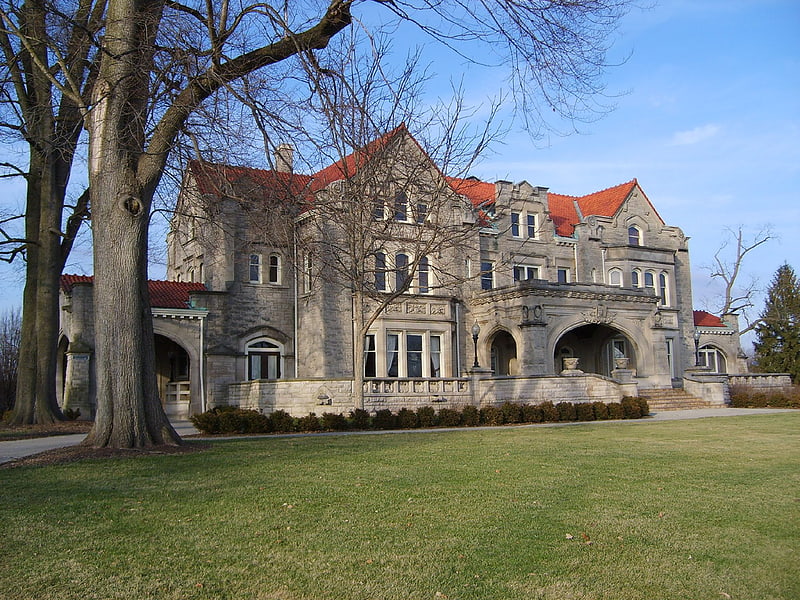
Museum in Muncie, Indiana. Minnetrista, is the home of the Ball Jar and a Gathering Place located in Muncie, Indiana with exhibits and programs that focus on nature, local history, gardens, and art. The 40-acre campus includes a museum with changing exhibits, the historic home called Oakhurst, many themed gardens, outdoor sculptures and a portion of the White River Greenway. It is located in the Minnetrista Boulevard Historic District, added to the National Register of Historic Places in 2012.
Located on the grounds, visitors can tour George Alexander Ball's house, known as Oakhurst, which was built in 1895 and designed by architect Louis Gibson. The first floor is furnished to appear as it did in the 1920s. Visitors can also tour the grounds that feature many outdoor sculptures purchased by members of the Ball family.
There are many themed gardens, which include:
- Nature Area - three representations of Indiana native habitat, a pond, woodland and prairie
- Oakhurst Gardens - located by the Oakhust house, features a formal garden, sunken gardens, woodland gardens and courtyard garden
- Wishing Well Garden - designed in 2000 by the Delaware Master Gardeners, features themes of Four Seasons, Moon and Bird & Butterfly gardens
- Rose Garden
- Backyard Garden, formerly the Children's Gardens which was renovated in 2012
- Colonnade Garden
- Orchard Courtyard - a seasonal container garden display
Address: 1200 N Minnetrista Pkwy, 47303-2925 Muncie
Beneficence Statue

Statue by Daniel Chester French. Beneficence is a 1937 bronze statue on the campus of Ball State University, located in Muncie, Indiana. The statue is referred to as Benny by students.[2]
David Owsley Museum of Art Ball State University

Museum in Muncie, Indiana. The David Owsley Museum of Art is a university art museum located in the Fine Arts building on the campus of Ball State University, Muncie, Indiana, the United States of America. The museum's name was changed on October 6, 2011, from the Ball State Museum of Art to the David Owsley Museum of Art in honor of David T. Owsley, grandson of Frank C. Ball, to recognize his donation of over 2,300 works of art and planned gift of $5 million. Since departments within the Fine Arts Building relocated to other areas on Ball State's campus, the museum has expanded its galleries, beginning in early-mid-2012 and ending in 2013.
The museum is home to approximately 11,000 works of art (mostly paintings, photographs, prints and sculptures). It is one of only four Indiana art museums with an encyclopedic, world art collection.[3]
Address: 2021 W Riverside Ave, 47306-0001 Muncie
Shafer Tower
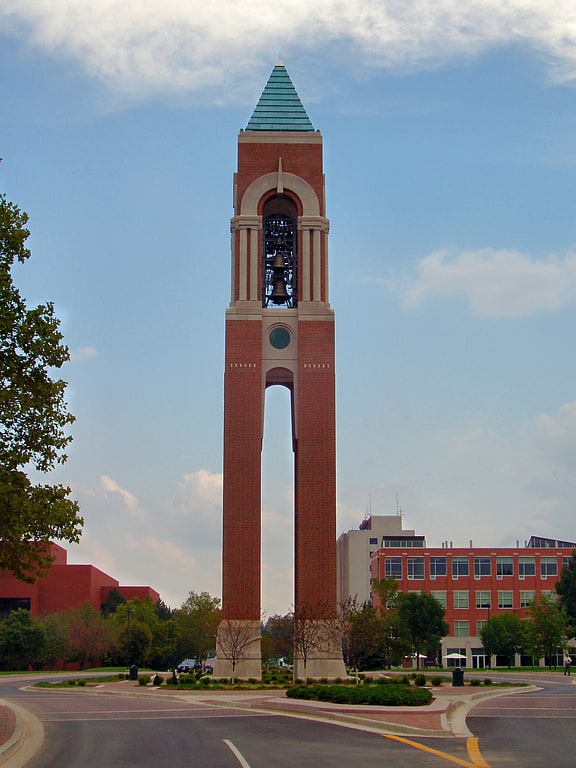
Tower in Muncie, Indiana. Shafer Tower is a 150-foot-tall free-standing bell tower, or campanile with a carillon and chiming clock in the middle of the campus of Ball State University in Muncie, Indiana. The tower was conceived and designed by Eric Ernstberger, co-founder of architectural firm Rundell Ernstberger Associates. This three million dollar project was completed at the end of 2001 and received final inspection February 2002. Breaking the record for the highest bell tower in Indiana, Shafer Tower is one of the couple hundred examples of carillon bell towers spread among the United States.
Dedicated in 2002 to Phyllis and Hamer Shafer, Shafer Tower has become an unofficial landmark of Ball State University. It stands in the median of McKinley Avenue on University Green, the northern quadrangle of campus.
A narrow staircase in the tower leads to the control room of the carillon, which has 48 custom-made bells. From here a musician can play the instrument on special occasions or for concerts. The bells are programmed by computer to play the Westminster Quarters to announce the time between 7 a.m. and 7 p.m. One can also control the bells of the tower with a keyboard, which depending on how hard the keys are pressed, will make the bells chime louder. If manual operation is not desired, Shafer Tower is also ready to play over a hundred of already programmed songs.
Due to a construction defect in the type of cement used to build the tower, the masonry on Shafer Tower had to be built twice. Though other courses of action were considered, it was decided the masonry, which was 50% complete, had to be taken down and replaced March 2001. Completion was delayed as a result, however Ball State University didn't have to pay any reconstruction cost. The architect of record was Edmund Hafer Associates of Evansville, Indiana.[4]
Frog Baby Fountain
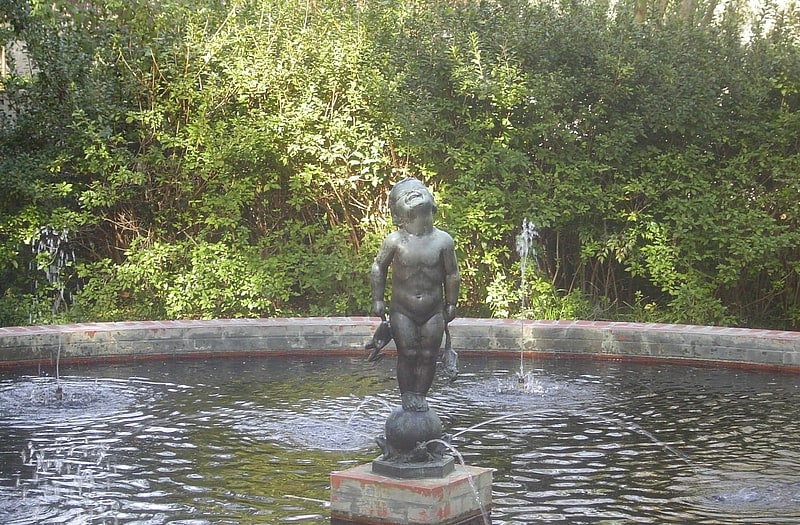
Statue by Edith Barretto Stevens Parsons. Frog Baby Fountain is a statue set in the middle of a fountain on the Ball State University campus. It is known as a sign of good luck and is a popular meeting place. The Frog Baby statue was cast by Edith Barretto Stevens Parsons in 1937 and has been moved several times prior to becoming what it is known as today. Frank C. Ball donated the statue to the university and it remained in the Ball State University Museum of Art until it became damaged by excessive rubbing by students, and was then packed away. In 1993, Frog Baby was restored and placed in a fountain where it resides today. The fountain is dedicated to Alexander Bracken, the son-in-law of Frank C. Ball, who was responsible for Ball State's rapid growth after World War II.[5]
Wheeler-Thanhauser Orchid Collection and Species Bank
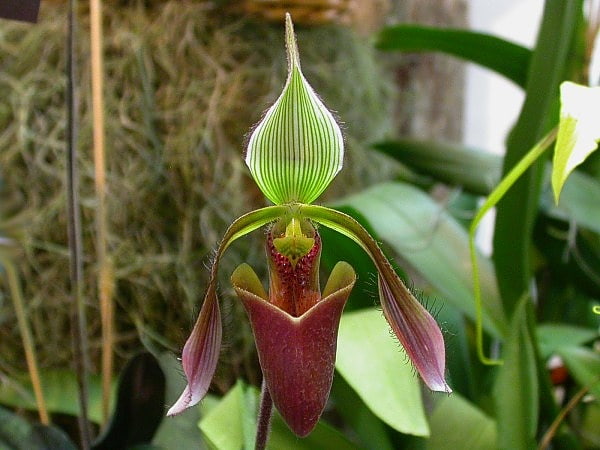
Botanical garden in Muncie, Indiana. The Wheeler-Thanhauser Orchid Collection and Species Bank is located within Christy Woods, an 17-acre property located on the southwest corner of the Ball State University campus in Muncie, Indiana, United States. Donated to Ball State University in 1971, the orchid collection is the largest college maintained orchid species collection in the United States.[6]
Address: 2400 W Riverside Ave, 47304 Muncie
West Washington Street Bridge

Arch bridge in Muncie, Indiana. The West Washington Street Bridge is a historic concrete arch bridge in Muncie, Indiana, United States. It spans the White River, connecting Washington Street and Meeks Avenue. It was designed by Charles Armintrout, who was the Delaware County Engineer at the time. The bridge has four elliptical arch spans. The steel reinforcements of the arch rings extend deep into the bridge's piers and abutments, allowing the piers to be substantially thinner. This design was inspired by the works of Edwin Thacher. Although this bridge is made of concrete, a series of recessed panels, which have the aggregate exposed, provides texture and contrast.
Three plaques are embedded into the railing of the bridge. Two of the plaques include the names of the Delaware County Commissioners, the County Auditor, the original construction company, the restoration contractor, and the Delaware County Council. The third plaque includes a commendation regarding the bridge's restoration in 1996.[7]
Address: W. Washington Street, 47305 Muncie
National Model Aviation Museum
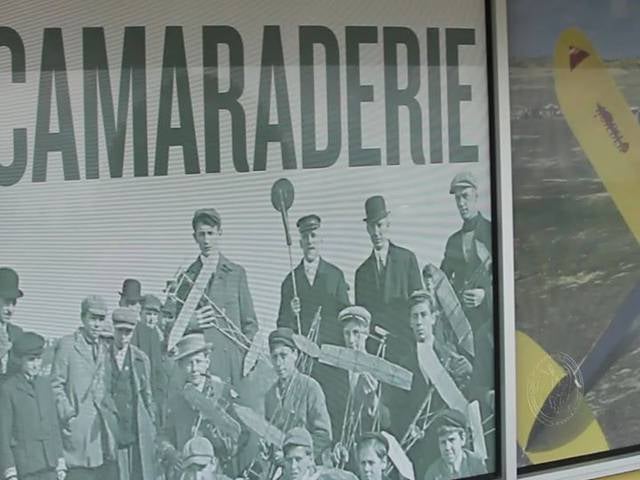
Specialty museum, Museum
Address: 5161 E Memorial Dr, 47302-9050 Muncie
Christy Woods
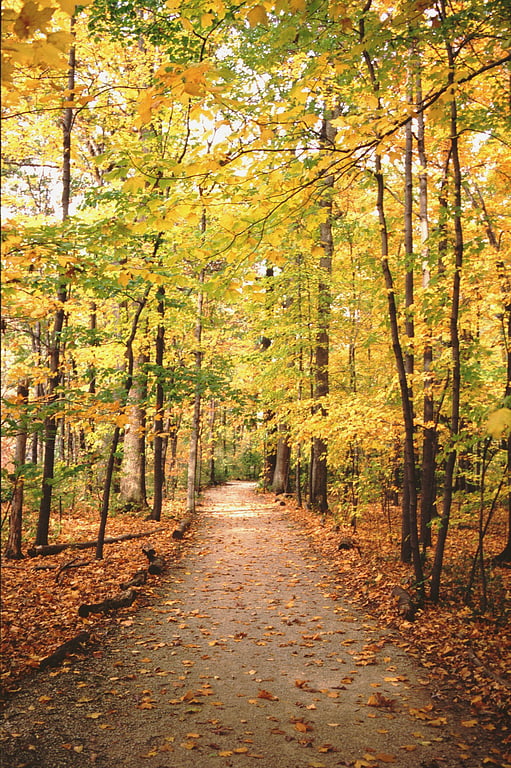
Christy Woods is an arboretum and botanical garden located on the southwest corner of the Ball State University campus in Muncie, Indiana, with special focus on Indiana's native plants and ecosystems.
Christy Woods was part of the original land gift to the State of Indiana from the Ball Brothers in 1918. Dr. O. B. Christy worked with his biology classes to transplant wild flowers from around the state of Indiana into the woods. In 1928, trails and garden beds were created, at the suggestion of J.J. Porter of Cornell University
Today approximately three-fourths of the area is covered by mature forest, dominated by a mixture of oak, hickory, ash, walnut, hackberry, and maple. Christy Woods is also home to Ball State University's four greenhouses, the Rinard Orchid Greenhouse, home of the Wheeler Orchid Collection and Species Bank, the Teaching and Research Greenhouse where the University's teaching collection for students to study is housed, the Herb Greenhouse, where herbs used by the University's Dining Services are grown and the Environmental Studies greenhouse, used for plant propagation and aquatic research.[8]
Address: 2601 W Riverside Ave, Muncie
Beech Grove Cemetery

Cemetery in Muncie, Indiana. Beech Grove Cemetery is a large historical cemetery and national historic district located at Muncie, Indiana. It was listed on the National Register of Historic Places in 1999.[9]
Address: 1400 W Kilgore Ave, Muncie
First Baptist Church
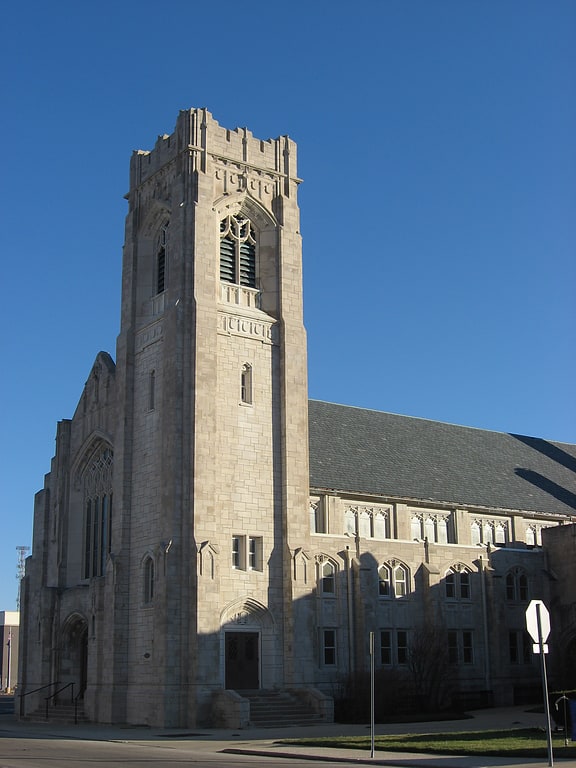
Church in Muncie, Indiana. First Baptist Church is a historic Baptist church located at 309 E. Adams Street in Muncie, Indiana. The Late Gothic Revival building was designed by Samuel Hannaford & Sons and constructed in 1928-1929 by Morrow & Morrow. It is constructed of Indiana limestone and has a cruciform plan. It features and engaged five-story tower.
It was added to the National Register of Historic Places in 1988.[10]
Address: 309 E Adams St, 47305 Muncie
LaFollette Complex
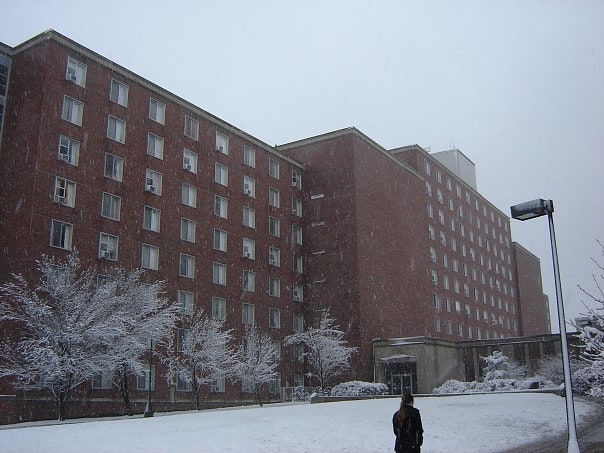
Student dormitory in Muncie, Indiana. LaFollette Complex was the largest residence hall complex on the Ball State University campus in Muncie, Indiana, United States. The complex housed 1,900 men and women in nine halls. The building itself had a net worth of $11 million. The basement of LaFollette also housed campus offices, classrooms, computer labs and gym equipment. The basement of LaFollette had two dining facilities and there was a buffet-style dining hall on the first floor.
LaFollette is named for Dr. Robert LaFollette, who was a social science professor and department head at Ball State University from 1921 to 1961.
LaFollette Complex was demolished in 2020.[11]
Address: 1500 McKinley Ave, 47306 Muncie
Appeal to the Great Spirit statue

Statue by Cyrus Edwin Dallin. Appeal to the Great Spirit is a 1908 equestrian statue by Cyrus Dallin, located in front of the Museum of Fine Arts, Boston. It portrays a Native American on horseback facing skyward, his arms spread wide in a spiritual request to the Great Spirit. It was the last of Dallin's four prominent sculptures of Indigenous people, which also include A Signal of Peace, The Medicine Man, and Protest of the Sioux.
A statuette of Appeal to the Great Spirit is in the permanent collection of the White House and was exhibited in President Bill Clinton's Oval Office. British Prime Minister Rt. Hon. David Lloyd George also had a statuette, which he received in association with a meeting with Sioux Chief Two Eagle during an October 1923 tour of the US and Canada[12]
Address: At the corner of Walnut Street and Granville Avenue, Muncie
YWCA
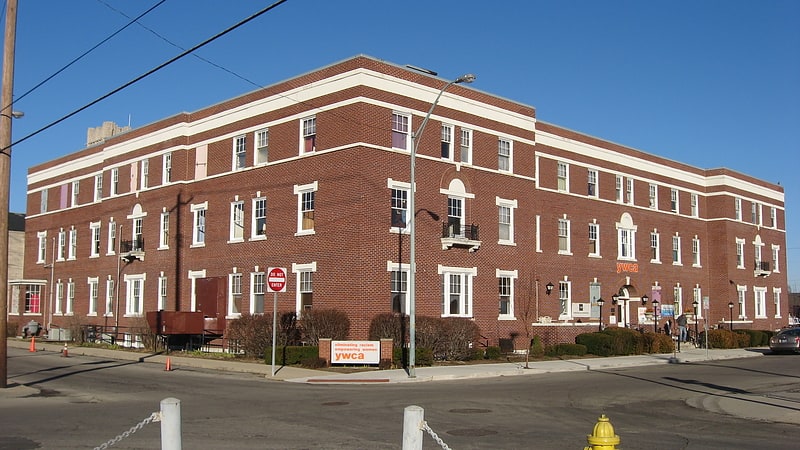
Non-profit organization in Muncie, Indiana. YWCA is a historic YWCA building located at Muncie, Delaware County, Indiana. It was built in 1925, and is a three-story, five bay by three bay, restrained Colonial Revival style brick building with limestone detailing. It has swimming pool in the basement, meeting and recreation rooms on the first floor, and sleeping rooms on the second and third floors.
It was added to the National Register of Historic Places in 1989.[13]
Address: 310 E Charles St, Muncie
Moore–Youse–Maxon House
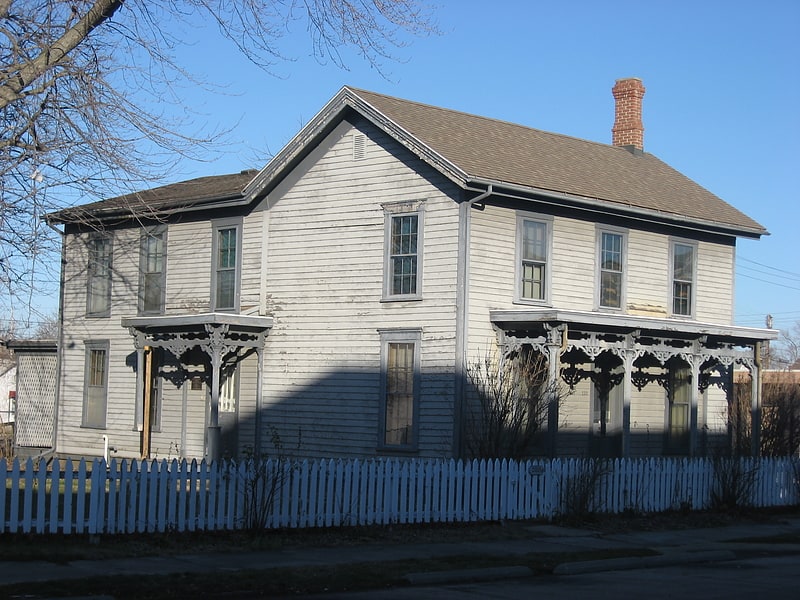
Museum in Muncie. The Moore–Youse–Maxon House, also known as the Moore–Youse Home Museum, is a historic home located at Muncie, Delaware County, Indiana. It was built about 1860, and is a two-story, three bay, vernacular Greek Revival style frame dwelling. It features a rebuilt front porch with sawnwork and brackets. It has a two-story rear addition. The house remained in the same family from 1864 to 1982. The building is operated by the Delaware County Historical Society as a historic house museum.
It was added to the National Register of Historic Places in 1984. It is located in the Walnut Street Historic District.[14]
Ball Communication

The College of Communication, Information, and Media is a part of Ball State University in Muncie, Indiana.
The Ball Communication Building and the David Letterman Communication and Media Building house the CCIM classrooms, offices, television studios, and radio station. CCIM has 1,300 majors and minors, placing it among the ten largest communications programs in the United States.[15]
Bracken Library

The Alexander M. Bracken Library is the main library on the campus of Ball State University in Muncie, Indiana. Opened in September 1975 and designed by Walter Scholer and Associates and the Perkins and Will Partnership of Chicago, the 320,000-square-foot facility is located in the geographic center of the Ball State University campus and is distinguishable for its unique, Brutalist architecture.
The main collection of Ball State's University Libraries, the Bracken Library holds a collection of over of 1.5 million print volumes, over 2,900 periodical subscriptions, over 1 million microforms, nearly 98,000 government documents, and over 120,000 maps as well as audiovisual materials, music scores, and archival resources. In addition, Bracken Library visitors have online access to scholarly literature, learning objects, and primary sources though over 65 electronic research databases including the Digital Media Repository and Cardinal Scholar Institutional Repository which provide access to digitized archival resources and Ball State scholarly works. On average, the library receives more than 4,500 visitors per day to access collections materials, participate in instruction sessions and consultations, and use technology resources.
The library is named for Alexander M. Bracken, Muncie lawyer and philanthropist who served as a member of the State Teachers College Board and the Ball State University Board of Trustees from 1954 to 1980 who “was instrumental in Ball State’s rapid growth in the decades following World War II.”
A casting of Albin Polasek's Forest Idyll is displayed on the first floor lobby of Bracken Library. The sculpture serves as a popular meeting place for students and is colloquially referred to as "The Naked Lady."[16]
Address: 2000 W University Ave, Muncie
Francis T. Roots Building
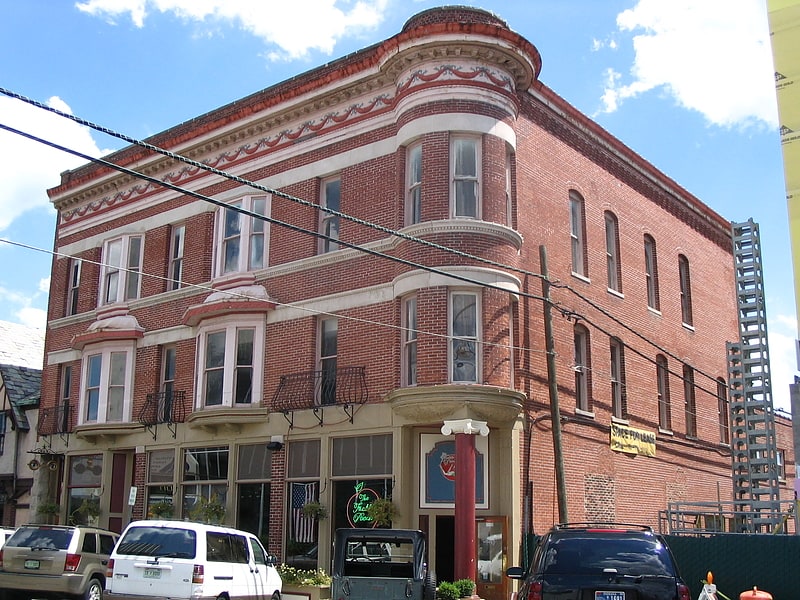
Francis T. Roots Building, also known as the Roots Building, is a historic commercial building located at Muncie, Delaware County, Indiana. It was built in 1895, and is a three-story, square plan, Queen Anne style brick building. The building features marble and limestone panels, projecting bays, and a corner turret. The building was remodeled about 1940 and restored in the 1980s.
It was added to the National Register of Historic Places in 1984.[17]
Masonic Temple
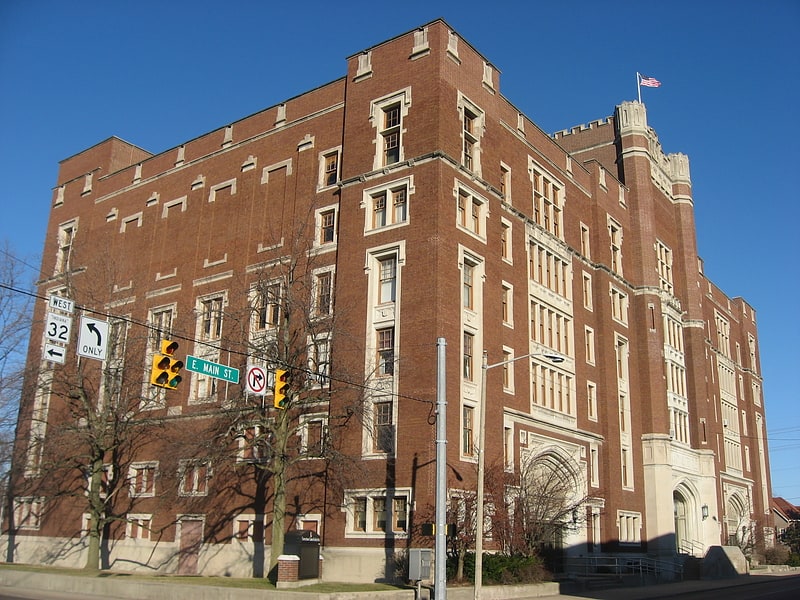
Non-profit organization in Muncie, Indiana. The Masonic Temple is a historic Masonic Lodge located in Muncie, Indiana. The building is now only used by the Cornerstone Center for the Arts.[18]
Carnegie Library
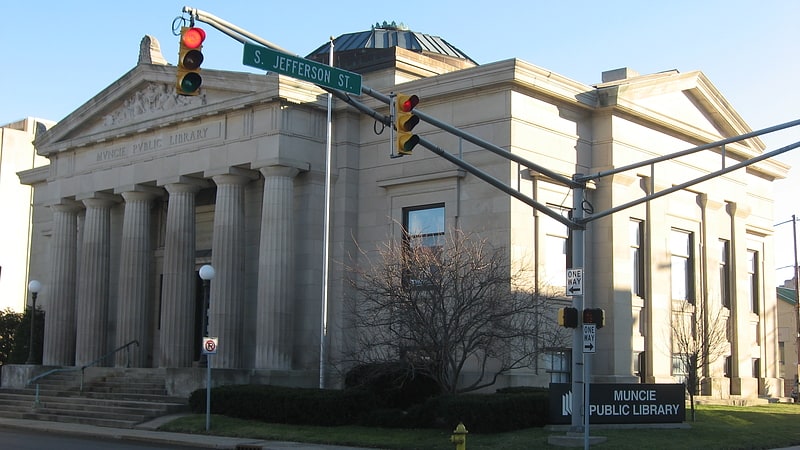
Building in Muncie, Indiana. The Carnegie Library is a historic Carnegie library located at Muncie, Indiana, United States. The building houses the Local History & Genealogy collection and an open computer lab. The facility also provides wireless access and a meeting room for local groups to reserve. It is one of four branches that make up the Muncie Public Library System. The building was made possible through a financial donation to the City of Muncie by Andrew Carnegie to expand their library system throughout the community. The foundation for Carnegie Library was built in 1902 and the building opened to the public in 1904. It has been in continuous use as a library since its opening. The building is located in downtown Muncie at the intersection of Jackson and Jefferson.[19]